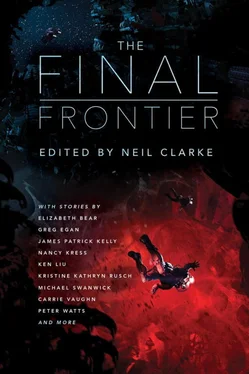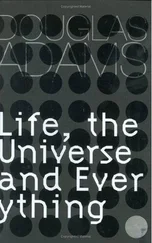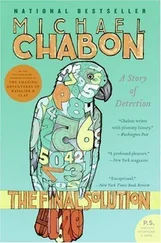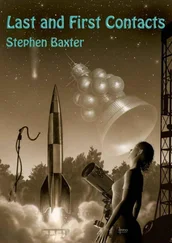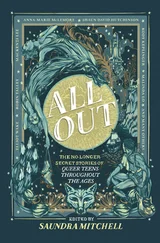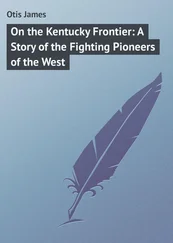The journalist looked blank again. Clearly her ideas of what was fascinating did not extend to experiments involving the speed of light. An unseen operator briefed her with the next question.
“So now the Argo is going to fly past a planet?” she asked.
“The Argo released a little probe called Harpy 1 a few weeks ago,” said Jackson, and their images were replaced by a long, sleek cylinder with a cluster of instruments at one end. “This probe will do the flyby of the Centauri system’s only Earth-type planet. That happens in six minutes.”
Society had been changing quickly and radically as the Argo was being built, late in the Twenty-Second Century. The Argo was also called the Centenary Unity Endeavour. It was a huge project spanning all the governments of the Solar System, and symbolizing their ability to work together. It took a decade to complete, was the most powerful machine ever built, and was very, very expensive. Too expensive. Worst of all, it was expendable. By 2200, to be expendable was to be ideologically unsound.
Even when the Argo was finished and being fueled with ice from Saturn’s rings, there were petitions to halt all work on it, and transform the crowning glory of human exploration into a monument to waste prevention. This monument would supposedly remind humanity that it was never too late to stop waste. In spite of unresolved court injunctions, the Argo was nevertheless launched on time. The legality of that was challenged, and some of the litigation continues to this very day.
The average human could reasonably expect to live to a hundred and thirty, so most of the Argo’s builders would still alive for the Centauri flyby, and could see some results from their work. Because there would be no more interstellar missions, this was humanity’s only chance to explore anything outside the solar system.
The mission plan had been for the Argo itself to pass close to Centauri A, and use the star’s gravity as a slingshot to swing around through sixty-seven degrees. It would then travel another eighteen light-years to Gliese 581. This star had six planets, and its flyby would be the spectacular climax of the mission. Of course none of us would live to see that, it was our gift to future generations.
Once the Argo’s nuclear fuel and reaction mass had been spent, a probe the size of a pickup truck detached from the main part of the spacecraft and drew ahead using ion engines until it was traveling just one mile per second faster. There was a substantial risk that the huge nuclear drive and its tanks might hit a scrap of cosmic debris and explode, so it was not safe to be near. The unmanned probe that was the real Argo was thin, tiny and streamlined, and had been built tougher than an armor piercing artillery shell. It had a far better chance of avoiding or surviving any impact.
My wife looked up from her UDP, thought for a moment, then spoke.
“Twenty-First Century economists would have called the Argo really bad value for money,” she said.
She was an economist, at least in the sense that she lectured in economic history at London University. She had no interest in space exploration, but every so often she tried to keep me company by saying something to show that she was paying attention.
“Exploration should be done for its own sake,” I replied.
“But they spent hundreds of trillions of dollars just to streak through two star systems at a tenth of lightspeed. Why bother?”
“True, why bother?” I sighed, maybe too theatrically. “The people who think like you have won. The Argo has become both the first and last starship. Ever.”
She returned her attention to her UDP, embarrassed by being right yet slightly venal.
“Can I go now?” asked Jason.
“No!” I snapped.
“I’ve got swimming training tomorrow.”
“You just want to telepresence with Julia Gould.”
“We’re just good friends!”
“Good, so you can stay and watch the Wells flyby. It’s the real highlight of the evening, and—and when you’re older you will thank me for making you stay.”
Wells had been discovered by Earth-based telescopes long before the Argo was built. It was a rocky planet orbiting Centauri B, slightly smaller than Earth, and right on the outer edge of the star’s habitable zone. It was the only Earth-type planet in the Alpha Centauri system. Because it was a slightly bigger, warmer version of Mars, a Spacebook campaign was begun for it to be named after one of the thousands of science fiction authors who had written novels involving Mars. A hundred years after his death, the author of The War of the Worlds had won this contest.
Control-Captain Jackson and the journalist were replaced by an image of Wells at the center of our living room’s holovista. It began as a reddish spot, but this quickly became a half-moon shape. Over the course of a few seconds it expanded into a red, green and white disk about a yard across, then it reverted to a half-moon that dwindled back into a red dot as Harpy 1 left it far behind. The encounter had taken all of fifteen seconds.
“Is that all there is?” asked Jason, his arms still folded tightly.
“That was what a human would see,” I replied. “Obviously you’re a human.”
Jason scowled. Like a great many teenagers of thirteen or fourteen, he disliked being a member of the human race and considered my words to be an insult. He was wearing his newly fashionable nerve-servo contact lenses, the kind with cat’s eye pupils. They actually contracted and dilated, and were meant to make him seem like some sort of feline predator. He also had a pair of prosthetic vampire fangs, but that sort of accessory had been fashionable for two hundred years.
“So, er, what else are we supposed to see?” asked my wife, to break the silence.
“That,” I said.
The largest image of Wells had just been projected for us to examine at our leisure. Imagine Mars, slightly larger, slightly warmer and quite a lot wetter, but with no craters. There were streaks and patches of olive green, and tracts of grayish blue that were its small seas. The polar caps were huge, as if an ice age were gripping the planet. There were also cloud systems, but they were thin and stringy.
“A lot of the surface is red desert, but there are areas of green,” some unseen planetary scientist was explaining excitedly. “Spectral analysis already shows it to have chlorophyll, but not quite as we know chlorophyll. The little seas and lakes are obvious, and rivers are visible because of vegetation growing beside them. This is not just an Earth-like planet, it’s another Earth!”
The air pressure was barely that of very high mountains on Earth, but it was enough to support liquid water. Wells seemed to be a planet made up entirely of tundra grasslands, shallow, swampy seas, and icy wilderness. It was the sort of place that would tolerate humans, rather than welcome them.
“What about aliens?” the journalist asked.
“We got a view of part of the night side,” the scientist replied, “but there were no lights from cities. If there are any intelligent aliens, they would still be hunter-gatherers.”
He went on to make the usual comments about what a pity it was that there would be no follow up probe, and that this would be all that we would ever learn about the planet Wells.
The Wells flyby had been timed to be part of a larger show. While Harpy 1 had been flashing past the planet, the Argo was approaching Centauri A. More accurately, two chunks of the Argo were approaching the star. Three days earlier there had been a collision, and the Argo had been split.
“So the Argo collided with a bit of dust, and that was enough to blow it apart?” asked Jason.
“Yes.”
“Couldn’t happen.”
“The Argo was traveling at nine percent of the speed of light,” I said with my hand over my eyes. “That means the kinetic energy released was equal to that of quite a large bomb. We were lucky that the Argo survived at all.”
Читать дальше
